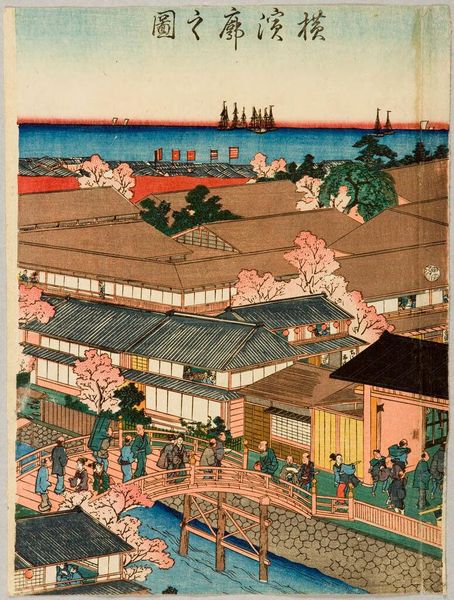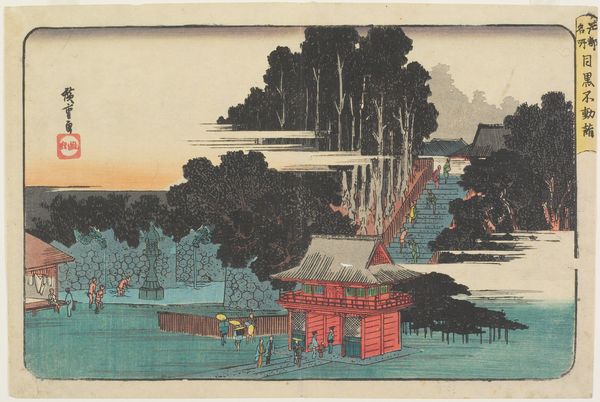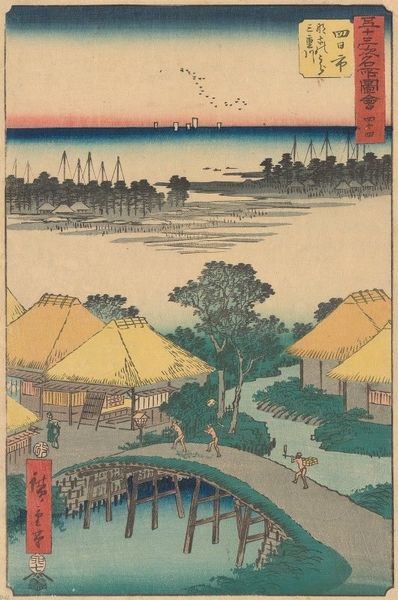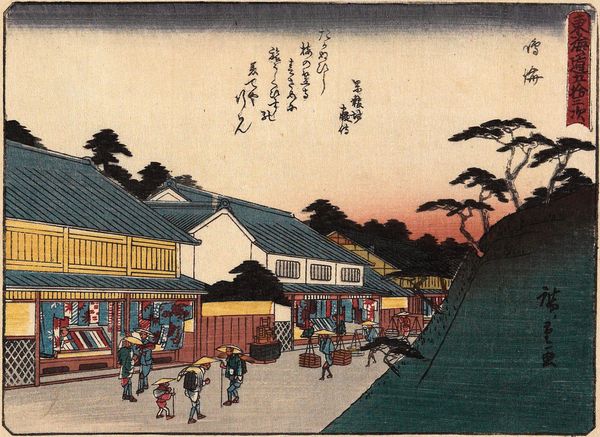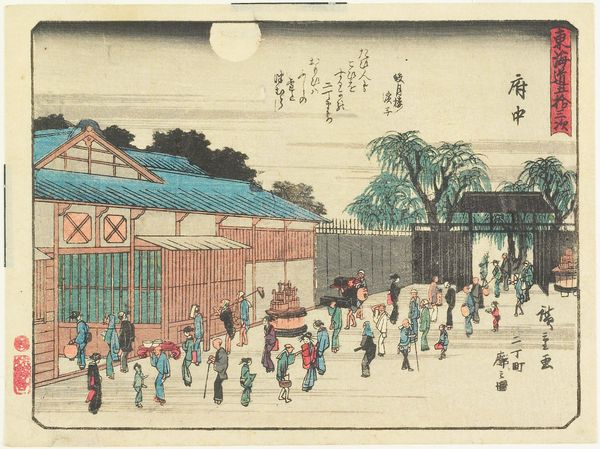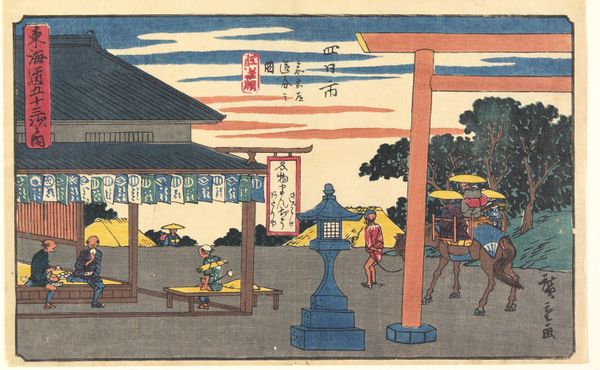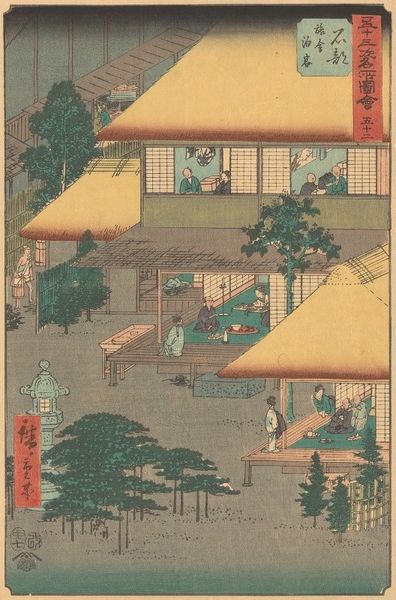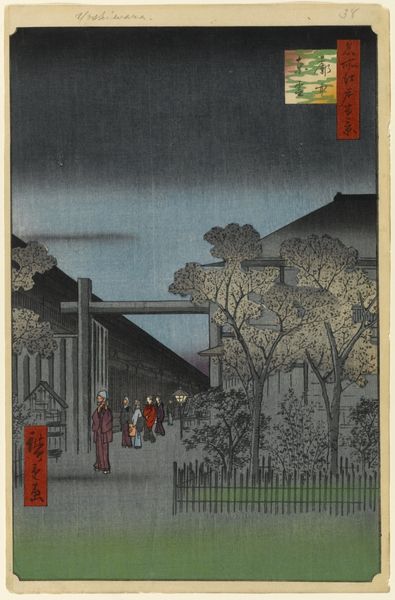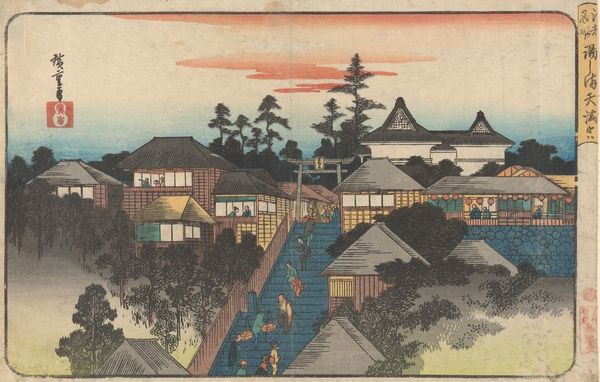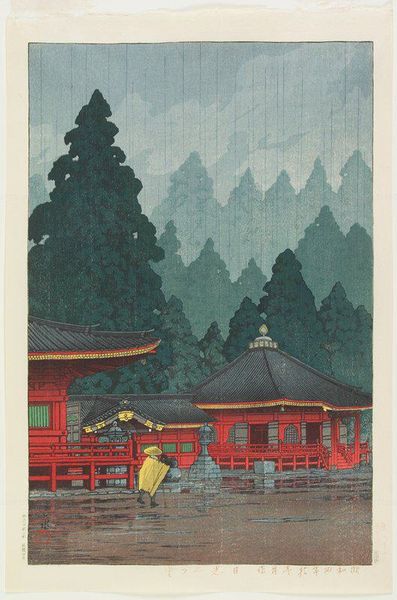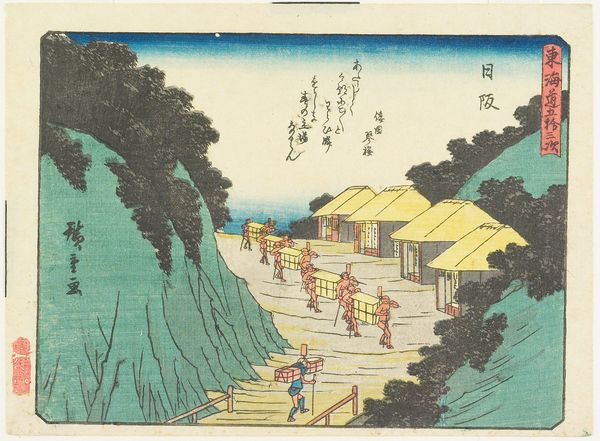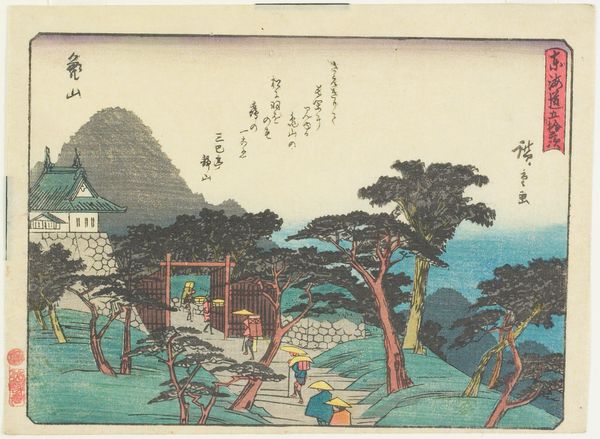
Copyright: Public Domain: Artvee
Curator: Here we see "Yōmeimon Gate at Nikkō Tōshōgū Shrine," a woodblock print created by Kobayashi Kiyochika in 1897. Editor: My initial impression is one of awe and slight detachment. The gate shimmers with an otherworldly vibrancy, set against the almost faded background of what appears to be nature and everyday people. Curator: Kiyochika’s ukiyo-e style masterfully captures the spiritual essence of the shrine. The Yōmeimon Gate itself, also known as the "Gate of Sunlight," is laden with symbolism. Its ornate carvings teem with figures from folklore, history, and philosophy—a testament to the syncretic beliefs flourishing at the time. Consider the phoenixes, dragons, and legendary emperors woven into its design. Editor: It strikes me that this image almost performs a kind of cultural preservation, documenting a site that is both historically significant and visually rich, and situating it within the experience of ordinary citizens who seem to marvel at it too. But who has access to marvel, and what position in society do these visitors hold? This gate, while stunning, feels like a dividing point between classes as well. Curator: Indeed. These sites became popular destinations after the Meiji Restoration when more and more people traveled. Note the composition too: the gate commands the foreground while the people, while present, are much smaller. It’s almost a reverential presentation. But I also wonder about the choice of printing, how the traditional craft mediates these sites and their memory over time. Editor: It’s fascinating how Kiyochika’s landscape manages to evoke both grand spirituality and quotidian human activity, creating a dynamic tension. Are we invited to witness this moment, or to join it? Does that change for different viewers across time? Perhaps our presence here today continues this dialogue, acknowledging that cultural landmarks exist within evolving social contexts and personal understandings. Curator: Yes, just as the gate symbolizes layers of meaning, our interaction with its image also gathers layers, revealing our current place in that timeline. It is a reflection of how visual symbols sustain meaning while accommodating shifting cultural perspectives. Editor: A worthwhile meditation then, connecting history with present reflection, reminding us that the gate—both literally and metaphorically—invites more than just passage but also deeper questions about society, faith, and access.
Comments
No comments
Be the first to comment and join the conversation on the ultimate creative platform.
